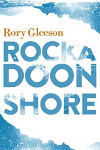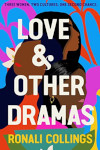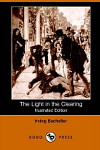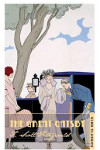Lesley Glaister – The Squeeze
Posted 20th September 2017
Category: Reviews Genres: 2010s, Angst, Crime, Domestic, Thriller
Comments Off on Lesley Glaister – The Squeeze

Tempted by the fruit of another has nothing on this.
Publisher: Salt
Pages: 286
Type: Fiction
Age: Adult
ISBN: 978-1-784-63116-1
First Published: 15th August 2017
Date Reviewed: 18th September 2017
Rating: 3.5/5
Norwegian Mats sees something changing in his marriage to his beloved Nina, and true to his thoughts, she wants to split up. He gets a job in Edinburgh, moves overseas. Meanwhile, Romania Marta, a girl from a poorer family, is lured into a hotel meeting with a man a gut tells her has bad intentions. She pushes past her worries; she is trafficked to Edinburgh to work in a brothel. Mats’ life is unstable, his new wife depressed and relying on alcohol, and Marta is trying to find a way to contact home.
The Squeeze is a fairly fast-moving thriller that looks at trafficking in 90s Scotland – girls from Romania in this case. It uses both regular chapters and a diary format to tell a tale full of narrators (but never too many).
This isn’t a particularly long book – it teeters on the 300 pages mark – but it manages to get through three periods of time without any rush. More an exploration than any edge-of-your-seat action (though due to the subject matter you will be wanting to find out what’s happening), Glaister takes the story beyond transport and prostitution to the home life of the regular person. And this is really what makes the book what it is – the lack of rush and the incorporation of the everyday of 90s Scottish living brings an added horror to what’s going on as well as a nod towards the fact that this goes on where others would not think it. Glaister uses accents to good effect, using a stereotypical Scottish dialogue that makes you think things are okay, normal, before pulling the rug from underneath you.
In this book, the trafficked girls – mostly girl, singular – are main characters. The book looks at both happy and bad times, with Glaister structuring it all carefully, considerately, but still with enough of the hopes of the reader in mind to, well, keep you reading. There’s detail in the book but not too much, again the three periods of time, the progression of it but all you need to know, is done well. There’s also a good mix of plot and character development, enough that it’d be difficult to say which is more significant. Glaister likes both.
The ending perhaps ties the book up a little neatly – it’s personal preference here all the way; does it really matter how it ends when what Glaister had to say has been completed already and achieved with aplomb? The only area in which the book does fall somewhat is in the editing – besides the somewhat broken English of Romanian Marta, which fits her, there are missing words and typos. These don’t make it difficult to understand, but are noticeable.
The Squeeze is good – well, as much as it can be given the subject matter. Glaister has produced a book that deals with a current subject of news but kept it well away from being a report or an opinion. Difficult sometimes but never so much that you feel the need to put it down.
I received this book for review.
Related Books
None yet
Orlando Ortega-Medina – Jerusalem Ablaze
Posted 8th September 2017
Category: Reviews Genres: 2010s, Angst, Drama, LGBT, Psychological, Short Story Collections, Spiritual
1 Comment

The twisted fire-starter.
Publisher: Cloud Lodge Books
Pages: 174
Type: Fiction
Age: Adult
ISBN: 978-0-995-46570-1
First Published: 26th January 2017
Date Reviewed: 8th September 2017
Rating: 5/5
In Japan, a young man finds himself with blood on his hands and looks back at how he came to be beside the dead master. In Israel, a priest finds himself in a prostitute’s erotic fantasy. And in town, a child finds themselves in the presence of a crowd running towards a tiger.
Ortega-Medina’s Jersusalem Ablaze is a collection of short stories full of darkness, both the humour and macabre, as well as a few stories dotted about that are less so (and can be a blessed relief!) It’s a fantastic collection, devoid of messages, but nevertheless leaves you with a lot to think about.
This is an incredibly well-written book, with a general style of writing used throughout yet the voices of the individual characters are unique. Told through a thin lens, the writer is there throughout, both at a distance from the text – letting the people speak for themselves – and in the definite position of storyteller, the darkness of the narrative as a whole echoing the idea of sitting around a fire listening to spooky tales. It’s at once both a fair boundary – the reader being far enough away from the character to see the subtext – and wonderfully immersive.
Unsurprisingly, considering what I’ve said above, there are many stand outs, which amounts to most of the collection, given the size of it. A particularly good piece, covered briefly in the summary, Torture By Roses looks at the forming of identity and vulnerability in youth, going to the extremes of having the character taken in by a renowned figure who in the privacy of his own home spends his days sitting amongst a mass of dead roses, wounding himself on the thorns deliberately; his promise of an inheritance for his young companion (or, to the reader, servant) causing the boy to stick around even though his mental stability is crumbling under the weight of what the man is doing to himself. After The Storm tells the story of a woman isolated in a lighthouse who, after said storm, finds a body on the shore and takes it home. The title story, Jerusalem Ablaze, again, summarised, puts an impressionable Israeli priest in the house of a prostitute with a specific fetish (that’s putting the whole situation lightly), and The Shovelist studies the way an old housekeeping agreement can continue once the house changes hands, an elderly couple persuading the younger to let them shovel their access routes.
On the subject of a lack of messages, it’s worth noting that the book isn’t something you read through and put down. There are no morals or so forth in the book but Ortega-Medina does provide much for you to think about, sometimes in the fashion of ‘stay in your mind for days pondering it’ and, suitably more often, the content will keep you thinking simply due to its weirdness. On the whole the lasting impact of the book is as a collection – the general quality and interesting ideas.
Jerusalem Ablaze – excellence all round.
I received this book for review. It has been shortlisted for the Polari Prize. The winner will be announced on 13th October.
Related Books
Jennifer Donnelly – Revolution
Posted 4th August 2017
Category: Reviews Genres: 2010s, Angst, Historical, Political, Psychological
Comments Off on Jennifer Donnelly – Revolution

‘Let them eat cake’ did not happen here.
Publisher: Bloomsbury
Pages: 470
Type: Fiction
Age: Young Adult
ISBN: 978-1-408-80152-9
First Published: 12th October 2010
Date Reviewed: 30th April 2017
Rating: 2.5/5
Andi’s little brother, Truman, died unexpectedly a couple of years ago, and Andi is struggling to come to terms with it; it happened under her watch. Failing school and with a poor outlook on university, her father tells her she must join him on a work trip to Paris. She doesn’t want to go but Paris was the home of a historical musician she loves and her father’s friends are converting an old museum into a house; the building is full of artefacts from another time, including the diary of a girl living in 1700s Paris.
Revolution is a semi dual plot line book that looks at the horrors of the French Revolution starting from before the time of the fall of Bastille; it connects a young travelling servant’s life with a contemporary person in a not dissimilar position, one grieving her brother, the other trying to look out for a young prince. The book has a lot of promise – history in tandem with the present; the possibility of time travel that is somewhat realised – but is unfortunately plagued by very lazy writing.
Andi does not read as real. Her status in society – high – is not explored enough for you to believe it. The way she speaks does not correspond to her age. Donnelly has inserted a lot of strange non-words that heighten this – ‘parslied carrots’ – and employs the likes of the unnecessary ‘shake my head no’. Were it contained to Andi’s narrative, the laziness would not be so bad, but the 1700s Alexandrine speaks the same way, anachronisms running riot, the two girls sounding one and the same – in a literal way rather than symbolically. You could say Andi is translating it, but it still doesn’t ring true.
The information on the Revolution is the redeeming factor – this book has it in spades. The musician of Andi’s thesis may not be real (in our world) but everything surrounding him and his time is. The underground tunnels. The morbid death parties. The author’s research seeps through the pages.
In regards to the sort of time travel, it’s worth knowing that Andi is always under the influence of pills – she overdoses often – and whilst this doesn’t excuse her awful behaviour, it’s enough to wonder if she would have been such an uncaring person before. (Neither character is likeable.) The time travel concerns Andi, solely. Alexandrine’s part in the novel is limited to her diary. The diary is a bit far-fetched, with Andi reading it everywhere, including the artefacts section of a library, and not being asked about it. Her restringing of a guitar from two centuries ago using modern strings without research… thankfully this is fiction!
If you want information about the underground mausoleums in Paris, it’s worth dipping in and out of the pages, but otherwise it’s one to pass by.
Related Books
None yet
Rory Gleeson – Rockadoon Shore
Posted 12th July 2017
Category: Reviews Genres: 2010s, Angst, Commentary, Psychological
Comments Off on Rory Gleeson – Rockadoon Shore

If we took a holiday… it would be so nice.
Publisher: John Murray (Hachette)
Pages: 291
Type: Fiction
Age: Adult
ISBN: 978-1-473-63407-7
First Published: 12th January 2017
Date Reviewed: 12th July 2017
Rating: 3/5
A group of friends go away to a house in a remote part of Ireland for a weekend break. There have been tensions for a while but despite Cath’s best wishes, confining them all to a small space and adding in drink and drugs just makes things worse. The friends start to split off, fights begin, and from where local resident, Malachy sits with his view of the house, it looks like things will get awry rather soon.
Rockadoon Shore is a fairly short, focussed book, that looks at the sudden breakdown of a friendship group composed of very differing people. Told in third person through the various characters’ viewpoints, it’s a look at an average situation with more thought than tends to happen in reality.
There are six friends and one outsider (or, in the context of location, insider), and Gleeson casts the spotlight on each of them in turn, always continuing the narrative of the whole rather than reiterating it from different perceptions, but he does pause sometimes to look back when decisions in the group have had a lasting effect on any particular person. Whilst this style makes the book move slowly – though with its three-day focus confined to a house it was always going to be like this – it’s one of the defining aspects and when the plot – what there is, as the story is character-driven – drifts, it can be the reason to keep reading.
Part of this style’s reason for being is the characterisation. Whilst obviously devices and slight stereotypes – in many ways this book is like an episode of a soap opera – Gleeson’s characters have been developed to a fair extent. For the author, meanings are most important, personalities a little less so. This creates an interesting situation, particularly in the case of the women, where you have characters being written in a way that echoes the stereotype of men writing about women and then other times that echoes women writing about women. Due to Gleeson’s general idea to study the breakdown of friendship, this style, the switching of gender gazes, if you will, seems intentional. It allows for more reality, for ultimately broken stereotypes, to show that people aren’t all one way or another. It’s more obvious with the female characters – at least from this reviewer’s standpoint – but it does happen with the men, too.
The writing itself is okay; difficult is the decision to use dashes instead of quotation marks. It could well be, indeed, it seems to be sometimes, that the confusion as to who is talking at any one time is deliberate because it often doesn’t matter who’s saying what, but that does not necessarily put paid to reader frustration. There are grammatical and tense errors but they may well be intended.
The character of Malachy is a bit redundant. He goes through some realisations but as he does not really affect the group of friends beyond a plot device, you can skip his chapters without issue. His personal drama at the end is difficult to care about.
Of that plot device, the ending, which is more a metaphor for fissure than anything else, it must be repeated that there’s not much plot. As much as the book does an excellent job of reflecting current life, there’s little to take away with you. Rockadoon Shore isn’t a bad book or a good book, it just is.
This book was one of several available at a showcase I attended.
Related Books
None yet.
F Scott Fitzgerald – Tender Is The Night
Posted 5th July 2017
Category: Reviews Genres: 1930s, Angst, Autobiography, Drama
3 Comments

And confused is the book.
Publisher: Various (I read Alma Books’ edition)
Pages: N/A
Type: Fiction
Age: Adult
ISBN: 978-1-847-49259-3
First Published: April 1934
Date Reviewed: 23rd June 2017
Rating: 1.5/5
When young film star Rosemary Hoyt holidays in France, she is attracted to the group of Americans on the beach, two in particular. Dick and Nicole Diver are wealthy residents who appear to have it together; Rosemary swiftly becomes infatuated with Dick and the two begin an emotional and somewhat physical affair. Dick and Nicole’s marriage had a rocky beginning, Dick’s own problems are causing wider issues, but Rosemary’s not on holiday for very long.
The publication of Tender Is The Night followed The Great Gatsby by a space of nine years. Received to mixed response on publication, Fitzgerald kept changing the chapter order throughout his life, his belief that it was his best work never fading. There are two ‘main’ versions of this book – the first, the one I’m reviewing today, is the original with the story told in flashbacks, and the second, released posthumously, a completion of Fitzgerald’s chronological altering that is currently not in the publishing industry. There are rumoured to be 17 versions in total and the book was first drafted with the genders switched.
Dealing with the idea that Fitzgerald thought this his best work, it’s surprisingly understandable. Taking into account the fact the book is highly autobiographical, it’s not hard to see a certain genius in the way the author observes what were essentially his own problems. While it’s included in the novel in an oft-subtle way (more on that in a bit), Fitzgerald gives a frank portrayal of the way drink can affect relationships and life in general, looking at himself openly and discussing rather than debating the problems. He leads Dick to alcoholic destruction at the same time it happened in his own life (though in Fitzgerald’s case, the result was dire). In terms of the author’s marriage to Zelda Sayre, it is looked into in the context of mental illness; it is revealed in the second ‘book’ that Nicole and Dick met in what we would now see as awkward, inappropriate circumstances, where Dick was Nicole’s doctor. Fitzgerald was never his wife’s doctor – he was no medic – but the position he puts Dick in allows him to deal with the situation from a new angle as well as his own angle as husband.
This is what is excellent about the book, this blunt and personal look at alcoholism, depression, extra-marital relationships, mental illness, that very much relate to Fitzgerald’s own life, if fictionalised enough to not be an autobiography.
But perhaps it is all this that is the reason the book is a mess. Beyond the use of metaphor – the specific nods to his own life – the book falls flat. The story is a muddle of chapters that for the most part could be placed in any order and be no more or less confusing than before. Besides the very obvious storylines of Rosemary meeting Dick, of the hospital, and of – so long as you know the details – Fitzgerald and Sayre’s life, everything else is murky. It’s hard to say exactly what the book is about beyond these three elements, and they don’t constitute much of a plot.
This has a lot to do with the writing. The book is full of devices, and random people pop in and out of the story without leaving any sort of mark on the page – perhaps they are figments of Dick’s increasingly cloudy mind but it seems more a choice made by the author as there are never any discussions of these pop-ins later on. Dialogue presents a particular problem wherein someone will talk and then they’ll appear to speak again for the next line of dialogue that by rights and format should be spoken by someone else. Very little is clear and the plot jumps here, there, everywhere.
Talking of the subtlety of Fitzgerald’s inclusion of drinking, the narrative, when told in third-person from Dick’s perspective, muddies the waters of what people in the novel are thinking. Mostly, things happen to Dick and you’re not in the know. You’re as baffled as Dick might be at any given moment (this is different to the general unclear nature of the text). It’s in the dialogue, conversations with others, that the drinking and the social effects of it are confronted. Rather clever, but due to it being steeped twice in that murky pool, the effect on the literary aspect of the novel is not as profound as it could have been.
There are glimpses of interest. One chapter ends in a blood bath that you might expect to signal a mystery element to the story, but it’s never looked at again. Similarly the chapter in which Rosemary finds a dead body in her hotel room and Dick quietly removes it; in context with the reported fight between Dick’s friend and a ‘Negro’ (the word is used in context with the era rather than a pointer towards racism) this seems to usher in the great possibility of a discussion on race… but then nothing happens. The event simply drops out of the narrative.
The confusion takes a break at the start of ‘book two’ or, depending on who you ask, from page 100 onwards. (Around page 100 – of any edition, it seems – is the place quoted by most people at which the novel starts to become better.) Book two opens on Nicole’s time in hospital and the beginnings of her relationship with Dick and is much more straight forward and utterly linear.
There are a few good things about Tender Is The Night, particularly from an academic angle, but they are slight. If you’re really into the idea of reading everything Fitzgerald wrote you’ll likely want to read this book regardless of the reviews, but everyone else would be much better off spending their time with another. It might be a Fitzgerald and it might be called a classic, but it’s difficult to say it’s worthy of either designation.
























